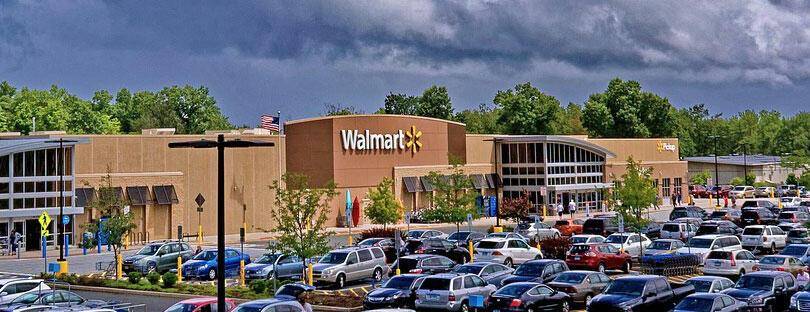Reinvention. In the world of business, it’s a word that inspires fear to many companies that don’t know how to deal with failure and prefer to go on with the same old practices, rather than change their strategies and overcome disaster. It’s maybe the word that defines giant companies like Wal-Mart, which is known as the world’s largest company by revenue and the world’s biggest retail corporation. These kind of companies are known for their capacity to adapt to the constant cultural and technological transformations of our era: for example, in 2015 Walmart suffered its worst stock decline in more than 27 years, after a series of major strikes demanding higher wages ended up with a series of reformations that made their market shares to fell approximately -33%, wiping out nearly $20 billion in the company’s market value. In the following years, the situation took a drastic turn: by 2018, the company reported that its U.S. comparable sales rose 4.5%, its strongest US sales growth in more than a decade, sending shares up 9% and showing that the mass merchant is holding its own against its primarily digital rival, Amazon. How was this possible? What are the key improvements that Wal-Mart took to finally achieve this growth? Let’s find out in the following article!
Wal-Mart aimed to improve their customer service:
Wal-Mart was not afraid to drop their earning in order to maintain the quality of their customer service, a vital part of an organization that relies largely on a face-to-face experience for the public. For years and years, Wal-Mart was constantly heckled over its low pay for its workers, but in 2015, the company took a big step in showing its appreciation for its workforce. Wal-Mart Chief Executive Doug McMillon said a $1.5 billion investment in wages and training, including raising the minimum store wage to $10 an hour from $9, were needed to improve customer service. While this certainly helped to solve Wal-Mart’s high employee turnover rate, it came at a steep cost: it accounted for three-quarters of the drop in earnings per share in 2016, from twelve percent to six percent.
Wal-Mart invested on the digital market…
For a company that mainly relies on the physical stores to obtain profit, it was obvious that the digital era would grow more and more in the upcoming years. Therefore, it was time to adapt to the online business and reach a market that is completely dominated by Amazon. For this, Wal-Mart saw an opportunity in an area that Amazon could not surpass yet: grocery sales. They started by remodeling its grocery areas, making grocery pickup of online orders available at a great number of stores, updating its app, better integrating its stores and e-commerce, and vastly expanding its e-commerce offering.
With grocery pickup, Walmart offered an alternative to the higher cost of using grocery delivery services, while still allowing for convenience, as its customers can skip shopping the aisles and instead remain in their cars while groceries are loaded into the trunk. Besides, the company began working with a network of partners to offer grocery delivery to customers’ homes. It has ended relationships with Uber, Lyft and Deliv while adding new partners like Point Pickup, Skipcart, AxleHire and Roadie, and shifting business to partners like Postmates and DoorDash. Today, Walmart’s grocery pickup service is available at more than 2,100 Walmart locations and delivery is offered at nearly 800. It expects to offer pickup at 3,100 locations and delivery at 1,600 locations.
Their online presence started to grow at an exponential rate, meaning that Walmart saw an increment in their online retail services. In 2018, Wal-Mart overtook Apple to become the No. 3 online retailer in the U.S., according to a report from eMarketer. While Amazon still leads by a wide margin, accounting for 48 percent of e-commerce sales in 2018. Walmart – including Sam’s Club and Jet.com – is poised to capture 4 percent of all online retail spending in the U.S, totaling $20.91 billion. In 2018, online sales in the rose 40%, their biggest sales comp in the US in a decade and a great comeback.
Everyday Low Prices
By 2016, Walmart opened 38 Supercenters and relocated, expanded or converted 21 discount stores into Supercenters, for a total of 59 Supercenters, and opened 69 Neighborhood Markets, 8 Sam’s Clubs, and 173 international locations, and relocated, expanded or converted 4 locations for a total of 177 international locations. All these stores have something in common: they share the motto “Every Day, Low Prices”, which is the same old philosophy that Wal-Mart has promoted over the course of its history. By sacrificing its own profit margins, Wal-Mart aims to sell at cheaper prices than its competition, something that clearly helps them to hook customers around the globe. The fame of their friendly service is another part of the strategy that the company has used to create consumer satisfaction. And that’s where the brand goes beyond the basic benefit of the product, in order to add value and improve the life of its audience.
All these elements have contributed to the fact that Wal-Mart’s online presence was not the only thing that started to show an enormous grow: as shown in a report by Fortune, store visits in the U.S. were up to 2% in August 2018, as was how much people spend per trip. Walmart U.S. CEO Greg Foran told reporters on a briefing that new shoppers were coming in and existing shoppers were typically adding an item to their shopping cart nowadays.
What should we expect in the upcoming years?
Complicated times will come for traditional retailers, but fascinating opportunities too. These are processes of creative reinvention: it is necessary to create new products and new ways of consuming that destroy obsolete business models. Companies must adapt to this new scenario of different consumption habits, social and technological changes. There are some companies that have been adapting for some time, such as Wal-Mart, which is determined to put up with Amazon. They have restructured their organization, expanding enormously to territories that seemed unexplored for such an important company. For this, they guaranteed that the shopping experience were equally perfect in any channel that the customer chose, either physical or digital. That is why despite the new scenario where e-commerce seems to succeed, Walmart does not lose much market share and grows every single day.
Retailers that don’t follow this example will certainly have a very bad time. Amazon will not completely vanish traditional retailers, but it will surely force them to close stores, transform their businesses and restructure their investments. That is why it makes no sense to discuss Amazon’s dominance, since the customers are the ones who choose this platform more frequently. Therefore, it will be better to spend time in evolving your brand, adapting to this new era, and making a difference. We must take these times as a great opportunity to evolve. And in the end, the main player, the customer , will be the one who chooses how they want and where they want to buy from.


